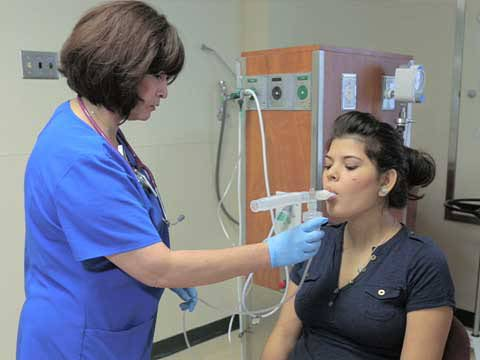In the ever-evolving field of healthcare, the importance of continuous education cannot be overstated—especially for those in respiratory care. As medical technologies advance and treatment methodologies progress, respiratory therapists (RTs) must stay informed and skilled in the latest practices to provide the best patient care. This demand for ongoing learning presents a unique opportunity for human resources (HR) professionals within healthcare organizations to support and facilitate the professional development of their RT staff. From identifying educational resources to creating development plans, HR’s involvement is crucial in fostering a culture of continuous learning. This article explores the significant role of continuous education in respiratory care, highlighting the opportunities it presents and how HR can play a pivotal part in this essential aspect of healthcare.
1. Understanding the Need for Continuous Education in Respiratory Care
The need for continuous education in respiratory care stems from the rapid pace of innovation in medical technology and the constantly evolving landscape of patient care protocols. As respiratory diseases become more complex and varied, RTs must possess up-to-date knowledge and skills to effectively diagnose, treat, and manage these conditions. Continuous education ensures that respiratory care professionals are equipped to adopt new technologies, apply the latest treatment methodologies, and adhere to updated healthcare regulations, ultimately leading to improved patient outcomes.
2. Accelerating Professional Growth Through Advanced Programs
For respiratory therapists looking to accelerate their professional growth, participating in advanced educational programs, such as an accelerated RT program, is invaluable. These intensive courses are designed to enhance the knowledge base and skill set of RTs in a shorter timeframe, allowing them to quickly adapt to the latest trends and innovations in respiratory care. HR departments can facilitate access to these accelerated programs, recognizing their potential to elevate the quality of care provided and to foster a culture of continuous improvement within their organizations.
3. HR’s Role in Facilitating Access to Educational Resources
Human resources departments play a crucial role in identifying and providing access to educational resources for respiratory care professionals. By staying informed about the latest seminars, workshops, conferences, and online courses, HR can help RTs find opportunities that align with their professional development goals. Additionally, HR can assist in negotiating partnerships with educational institutions and professional associations to secure resources and opportunities for staff at preferential rates or conditions.
4. Creating Individualized Development Plans
A key strategy for HR involvement in continuous education is the creation of individualized development plans for respiratory care professionals. These plans, developed in collaboration between the RT, their supervisor, and HR, outline specific educational goals, preferred learning methods, and timelines. By tailoring development plans to the unique needs and aspirations of each RT, HR can ensure that continuous education efforts are both relevant and effective, encouraging personal and professional growth.
5. Recognizing and Rewarding Educational Achievements
Advertisment
To further encourage continuous education among respiratory care professionals, HR can implement recognition and reward systems for educational achievements. Whether through formal acknowledgment in performance reviews, bonuses, or advancement opportunities, recognizing RTs for their commitment to professional development can boost morale and motivate others to pursue further education. Such incentives not only celebrate the individual’s achievements but also underscore the organization’s commitment to high standards of care and professional excellence.
6. Leveraging Technology for Education
In today’s digital age, leveraging technology for educational purposes offers a vast array of opportunities for respiratory care professionals. Online courses, webinars, and virtual simulations are accessible tools that HR can promote within the organization. These platforms not only provide flexibility in learning but also ensure RTs have access to the latest information and techniques in their field, irrespective of their location or schedule constraints.
7. Fostering a Culture of Peer Learning
HR can cultivate a culture of peer learning and mentorship within the respiratory care team. Encouraging experienced RTs to share knowledge with newer staff through structured mentorship programs or informal learning sessions can enhance team cohesion and elevate collective expertise. This approach not only facilitates continuous education but also strengthens the support network among professionals, promoting a sense of community and shared purpose.
8. Monitoring and Evaluating Educational Outcomes
To ensure the effectiveness of continuous education programs, HR should implement mechanisms for monitoring and evaluating educational outcomes. This could involve assessing improvements in clinical skills, knowledge retention, or patient care practices following participation in educational activities. Feedback from RTs on the value and applicability of the learned content can guide HR in refining future educational offerings and development plans.
9. Aligning Educational Initiatives with Organizational Goals
HR must ensure that continuous education initiatives align with the broader organizational goals and healthcare standards. By integrating professional development into the organization’s strategic planning, HR can ensure that educational efforts contribute to enhancing service quality, patient satisfaction, and compliance with healthcare regulations. This alignment demonstrates the organization’s commitment to excellence and continuous improvement in respiratory care.
10. Advocating for Continuous Education at the Leadership Level
Finally, HR should advocate for the importance of continuous education in respiratory care at the leadership level. Gaining executive support for allocating resources, time, and budget towards educational initiatives is crucial for sustaining a culture of continuous learning. By showcasing the direct benefits of continuous education on patient care outcomes and organizational performance, HR can secure the necessary backing for these programs.
Conclusion
Continuous education is vital in maintaining the high standards required in the dynamic field of respiratory care. Through the active involvement of HR, healthcare organizations can provide respiratory therapists with the opportunities, support, and resources needed to continuously enhance their skills and knowledge. From facilitating access to advanced programs like accelerated RT programs to leveraging technology and fostering a culture of learning, HR’s role is pivotal in ensuring that the respiratory care team is equipped to meet the challenges of modern healthcare. Ultimately, a commitment to continuous education benefits not only the professionals involved but also the patients they serve, contributing to the overall improvement of healthcare quality and outcomes.









